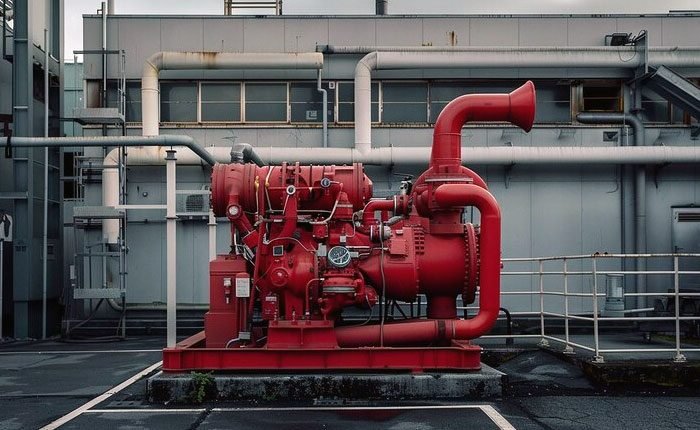Key Design Features of Firefighting Pumps
Material Selection
The materials used in the construction of firefighting pumps are crucial for their durability and performance. Common materials include:
Stainless Steel: Offers excellent corrosion resistance, ideal for pumps used in coastal or industrial environments.
Bronze and Brass: Used in pump components like impellers and casings due to their durability and corrosion resistance.
Cast Iron: Often used in less critical parts but may be coated to prevent rust.
Pump Types and Mechanisms
Firefighting pumps come in various types, each suited for specific applications:
Centrifugal Pumps: The most common type, known for their ability to handle large volumes of water and provide steady flow rates. They operate by converting rotational kinetic energy to hydrodynamic energy.
Positive Displacement Pumps: Ideal for low flow, high-pressure applications. These include piston and diaphragm pumps, often used for foam and chemical applications.
Performance Specifications
Key specifications include:
Flow Rate: The volume of water the pump can deliver, typically measured in gallons per minute (GPM) or liters per second (L/s).
Pressure: The pump’s ability to maintain a specific pressure, essential for delivering water over long distances or heights.
Power Source: Pumps can be powered by electric motors, diesel engines, or gasoline engines, depending on the application’s requirements.
Portability and Installation
Portable Pumps: These are lightweight and easy to transport, making them ideal for quick response scenarios and remote locations.
Stationary Pumps: Installed in fixed locations, these pumps are part of permanent firefighting systems in buildings, industrial complexes, and public infrastructure.
Special Features
Self-Priming: Allows the pump to remove air from the intake, making it easier to start.
Automatic Shutoff: Prevents the pump from running dry and getting damaged.
Noise and Vibration Control: Essential for minimizing disruption in sensitive areas like hospitals or residential buildings.
Applications of Firefighting Pumps
Industrial Facilities
Industrial environments, such as chemical plants, oil refineries, and manufacturing facilities, require robust firefighting systems due to the high risk of fires. Firefighting pumps in these settings often need to handle large volumes of water or foam and must be resistant to aggressive chemicals.
Commercial and Residential Buildings
In urban areas, firefighting pumps are a critical component of building safety systems. They are used in sprinkler systems and hydrants, ensuring quick response in case of a fire. The pumps must comply with local fire safety regulations and standards.
Marine and Offshore
Marine applications include ships and offshore platforms, where fire hazards are compounded by confined spaces and the presence of flammable materials. Firefighting pumps in these environments must be corrosion-resistant and capable of operating in harsh sea conditions.
Municipal and Public Infrastructure
Municipal fire departments rely on portable and stationary firefighting pumps to protect public infrastructure, such as bridges, tunnels, and public buildings. These pumps are often part of a larger network of hydrants and water supply systems.
Aviation and Transportation
Airports and transportation hubs require specialized firefighting equipment due to the unique challenges posed by aircraft fires. Firefighting pumps in these settings often work with foam systems to suppress fuel fires effectively.
Conclusion
Firefighting pumps are indispensable in modern fire protection systems, offering a range of features tailored to specific applications. Whether for industrial facilities, urban buildings, or specialized environments like marine and aviation, these pumps are designed to provide reliable and efficient firefighting capabilities. The selection of the appropriate pump type and specifications is crucial to ensure safety and compliance with industry standards. As technology advances, we can expect further innovations in firefighting pump design, enhancing their efficiency and effectiveness in safeguarding lives and property.


